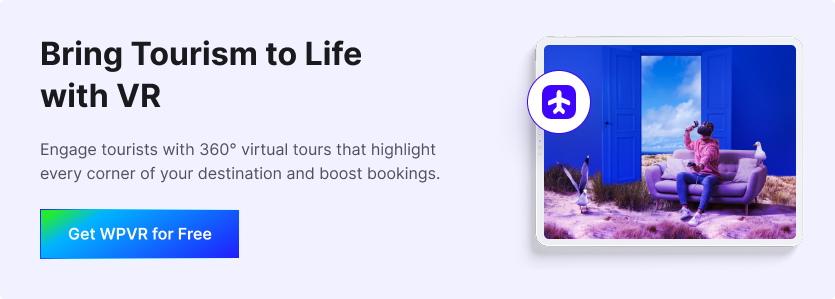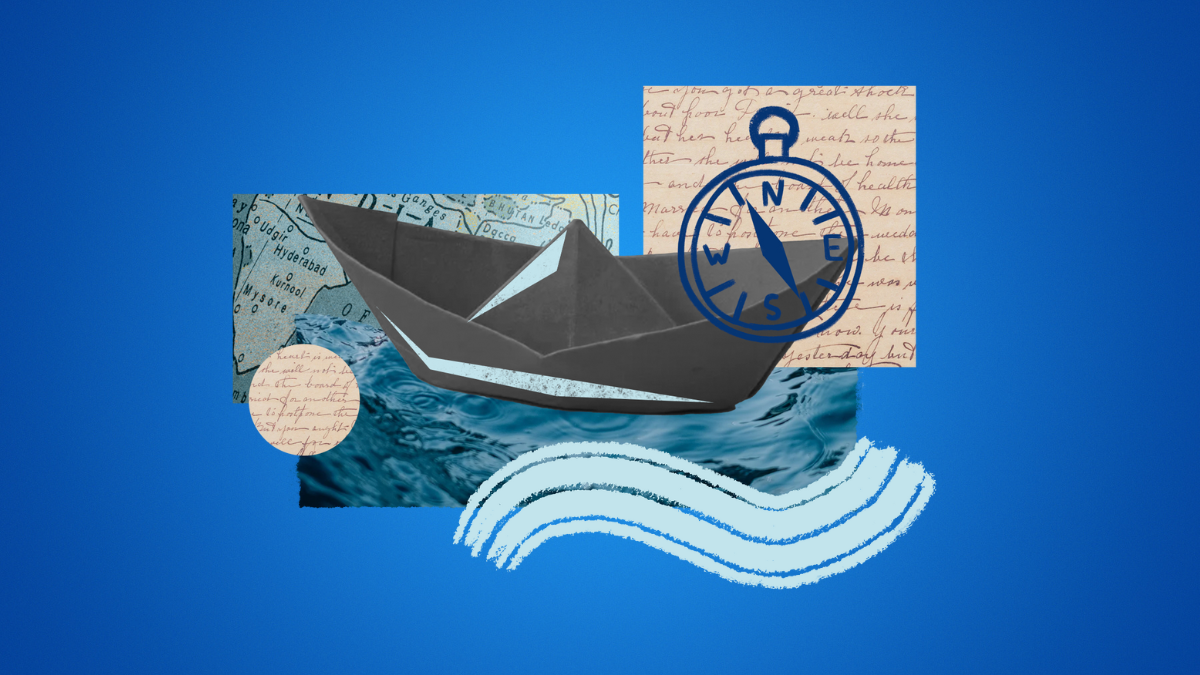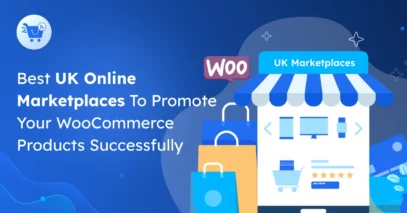I have worked with travel and tourism businesses long enough to see a pattern: most rely heavily on photos and videos to sell their packages. Sure, they look great, but they rarely turn enough browsers into paying customers.
From my experience, travelers want more than visuals; they want to feel the trip before they commit. That is why I have seen Virtual Reality become one of the most effective tools in the industry.
The numbers speak for themselves, the VR tourism market is expected to reach 30.54 billion dollars by 2030.
That is because travelers are far more likely to book when they can explore a destination in advance.
But here is the problem: most agencies either do not use VR or treat it as just a fun extra. I have worked with companies that doubled their inquiries simply by using short VR previews the right way.
I am not saying VR will magically work for every package you offer; it will not. But if you know which strategies to use, and for which customers, it can transform your sales results.
In this guide, I will share 8 reasons why you should use virtual reality in your tourism business. I will also show you some real examples so you can see how it works to get more clients and build trust.
So let’s get started,
TL:DR – Benefits of Virtual Reality in Tourism
- VR attracts more clients, builds trust, and improves customer experiences.
- Clients can explore destinations, hotels, and activities virtually, boosting bookings.
- Key benefits:
- Increased bookings with immersive VR content
- Time-saving and cost-effective compared to traditional previews
- Better marketing results with higher engagement
- Competitive edge through unique phygital experiences
- Easier client decisions with realistic previews
- Enhanced client education and cultural awareness
- Staff training through simulated real-world scenarios
- Travel-like experiences for non-travelers
- Real examples: hotel virtual tours, Atlantis Dubai 360 video, Hamilton Island 360 VR.
- For WordPress sites, WPVR is the recommended virtual tour plugin.

What is VR in Tourism & How Does it Work?

VR Tourism lets you experience a realistic virtual version of a tour before you travel. It works by capturing 360 panoramic images of the places in your tourism packages.
For example, you could create a virtual tour of a beautiful beach destination and put it on your website. Visitors can explore the area online, which makes them more excited and curious to visit in person.
This virtual experience helps turn interested visitors into actual clients by offering a unique and engaging way to showcase your tours. It makes your business stand out and draws more bookings.
- Learn more – What is Virtual Reality (VR) – All in One Guide
How Virtual Reality is Used in Tourism

Now, let’s explore how virtual reality is transforming the tourism industry. You’ll see how it helps clients preview destinations, make decisions, and enjoy immersive experiences.
- Preview Destinations: VR allows potential clients to preview destinations, hotels, and travel experiences realistically. It gives them a sense of the environment without leaving home. This helps them feel more confident before making a booking.
- Explore Interactively: Travelers can explore 360-degree tours, interactive hotspots, and in-destination experiences. They can see rooms, attractions, and amenities as if they were physically there. This immersive experience improves their overall understanding of the trip.
- Make Decisions: Using VR in tourism helps customers make informed decisions. They can compare options, view key information, and plan their journey effectively. This leads to higher satisfaction and increased bookings.
- Engage Customers: VR also enhances customer engagement by offering a fun and interactive way to explore. Visitors spend more time on your website and interact with your content. This builds trust and keeps them interested in your services.
- Showcase Experiences: Travel businesses can showcase unique features and experiences through VR. Clients can experience activities like underwater adventures or cultural tours virtually. This makes your offerings stand out from competitors.
8 Reasons to Use Virtual Reality in The Tourism Business
The way you use VR will vary depending on the packages you offer.
For example, you could offer a package where you take Kilimanjaro Hiking Tour with a group of people via caravan and visit multiple locations in a span of 3 to 5 days. So the package can include the key tourist spots, hotels/resorts to reside at, food & other facilities, and a certified travel guide.
Here are the main benefits of VR in tourism and the value of adding virtual tours to your website. It shows why virtual reality is important for your business and clients.
So let’s see the reasons,
1. Get Increased Bookings

Virtual reality in tourism helps you get your potential customers interested by letting them explore places in a fun and real way. This kind of VR content gives them more control than just watching videos, making their experience on your website better.
For example, you can create a virtual hotel tour that shows the pool, rooms, and bar with easy-to-use navigation and helpful tips. When your visitors feel in control, they stay longer and want to learn more about your packages.
You can also add a virtual booking interface inside your VR tours, so customers can book right away while they explore. Many travel agents and websites have found this helps bring in more bookings and new revenue.
Using virtual reality in hospitality isn’t just about showing places; you can add educational parts, VR flight experiences, or in-destination content to help your customers make smarter choices. This builds trust and keeps them coming back.
If you include VR photography and location-based AR solutions, you make the experience even richer for your customers. This helps you stand out and connect with travelers at every step of their journey.
2. Time-Saving and Cost-Effective

Many people worry that virtual reality in tourism will be too expensive or take too much time to create. But with the right tools, successful VR implementation can be affordable and quick.
For example, you can create a full VR travel tour in just 10 to 15 minutes using a digital 360 camera and simple software. This immersive VR content grabs the interest of potential customers.
A good 360 camera captures panoramic images, and a reliable virtual tour creator turns them into a virtual journey. Adding a virtual booking interface makes booking easy while customers explore.
To make it simple, we recommend WPVR. It helps travel agents and websites create engaging VR tours, boosting unique brand engagement and new revenue streams.
- Learn more – What are the 5 Best 360 Panoramic Cameras You can Buy Today
- Learn more – Best 5 Panoramic Camera Apps for Android to Capture 360-Degree Images
- Learn more – 3 Best Panoramic Camera Apps for Your iPhone
3. Improved Marketing Results

Using virtual reality in travel can help you keep visitors on your website longer and lower your bounce rates. The more time they spend, the better your chances of turning them into customers.
For example, you can add a virtual tour of an exotic destination to your site. When your visitors explore this VR content, they get more interested and excited to book with you.
This kind of immersive VR experience makes your marketing stronger and helps you stand out from other travel businesses. It creates a better connection with your potential customers.
By using virtual reality in travel as part of your marketing, you can boost your conversion rates and sell more packages. It’s a smart way to grow your business faster and easier.
4. Significant Competitive Advantage

Using virtual reality gives you a big edge over other travel businesses. Not many are using it yet, so you can grab the attention of potential customers and improve their overall experience.
For example, you could create a phygital experience, mixing a virtual tour of exotic destinations with real-life touches. This gives your visitors a unique way to explore and feel more connected to your packages.
Showing VR experiences also tells your customers that you care about giving them the best journey. Using immersive navigation and educational experiences helps them make informed decisions and enjoy the trip more.
Adding simple services like reliable airport taxis makes their whole experience smoother. When you focus on comfort and convenience from the start, you build trust and keep customers coming back.
5. Make It Easier for Clients to Make a Decision

Virtual tours make it easier to help your clients decide quickly. They get a real feel of the destination, improving customer experiences and building trust.
For example, you could create a virtual tour of a resort showing the pool, rooms, and nearby attractions. This immersion VR lets your visitors explore the same place they would visit in person and see key information.
Unlike photos or videos, VR shows true in-destination experiences. Your clients can see exactly what to expect, making their decision faster and easier.
By offering virtual tours, you can guide your clients through different customer journey stages. This helps them make informed decisions and pick the travel package that’s right for them.
6. Elevate Client Education and Cultural Awareness

VR tourism helps you educate your clients about a destination’s culture and history. When they know more, their experience becomes richer and more meaningful.
For example, you could create a virtual tour of Kyoto’s temples with clickable spots explaining the history of each shrine. This lets your clients explore and learn before they even arrive.
You can add interactive highlights, like local food etiquette or seasonal festivals, and short narrated clips about unique legends or historical events. This storytelling makes your clients feel more prepared and excited.
VR tourism helps your clients make better choices and feel more connected to the experience. This makes their trip memorable and shows that you care about their journey.
7. Advance Staff Training and Skill Development

Training your staff to be more knowledgeable and confident improves customer satisfaction. Virtual tours can play a major role in making this training more effective.
For example, you can run a tour company specializing in historical landmarks. Instead of just using manuals, you can also create a virtual tour of a famous castle with key facts, trivia, and storytelling prompts. This lets your staff explore the site virtually and learn how to guide clients better.
Here’s how this can help:
- Guided Practice: Staff can explore these virtual tours repeatedly until they’re confident in explaining each site to travelers.
- On-Demand Training: New hires or part-time staff can train at their own pace, reducing the need for in-person sessions.
- Better Engagement: A more visual and hands-on approach keeps employees interested in learning compared to reading static documents. They can also use resume summary ideas to highlight their skills and experience better.
Ultimately, you’re creating a more professional and knowledgeable team, which helps you deliver a better experience to your clients.
8. Offer Travel-Like Experiences for Non-Travelers

Not everyone can hop on a plane to visit far-off destinations. Virtual tours let these people enjoy an experience that feels like real travel from home.
For example, a family curious about Greece but unable to travel due to health or budget issues can explore Athens virtually. You can show landmarks like the Acropolis with detailed 360-degree views.
Virtual tours give your clients a travel-like experience and make them feel connected to the destination. This also helps your business engage more potential customers and stand out.
This approach benefits you and your audience:
- Accessibility: Anyone can experience new places, expanding your potential customer base beyond just travelers.
- Increased Interest: Some can feel inspired to book a trip once their situation changes, simply because they already feel connected to the destination.
- Educational Use: Schools or institutions can also use these tours as part of their curriculum, giving them new partnership opportunities.
With these virtual experiences, you’re broadening horizons for those who can’t physically travel while still fostering a desire to explore more.
Examples of Virtual Reality in Tourism
Virtual reality tourism has already proven its value in creating more engaging and informative travel experiences.
To show how this works in practice, let’s explore a few real-world examples where businesses have used VR for tourism to improve their services and attract more customers.
1. Virtual Tour of a Hotel
A virtual tour of a hotel is a great way to show your clients what you offer. Interactive hotspots let them explore rooms and amenities in detail.
For example, you could create a tour of a beachfront resort where visitors can click on the pool, restaurant, and suites. This helps them choose the best room and increases the chances they will book.
Virtual hotel tours give your clients a clearer idea of what to expect. It’s an effective example of virtual reality in tourism that improves customer experiences and bookings.
2. 360 Video Tour Atlantis Dubai
A 360 video tour of Atlantis Dubai lets clients explore the resort virtually. They can see every unique feature before even setting foot there.
For example, visitors can navigate through the aquariums, pools, and suites using interactive hotspots. This gives them a realistic sense of the place and its amenities.
Virtual tours like this improve customer experiences and help clients make informed decisions. It’s a perfect example of virtual reality in tourism in action.
Hamilton Island 360 VR Tourism
Hamilton Island 360 VR tourism lets you explore the island from your screen. You can see the beaches, resorts, and natural scenery as if you were there.
For example, visitors can take a virtual dive into the surrounding waters and experience underwater adventures. This immersive VR makes them feel part of the island before visiting.
Virtual tours like this improve customer experiences and help clients make informed decisions. It’s a strong example of VR in tourism.
Conclusion
Being in the travel and tourism business means you have a great chance to get ahead of your competition. Virtual reality in tourism is still new, so starting early will give you a strong advantage.
Virtual reality lets you offer unique and exciting experiences that attract more potential customers. It helps your business stand out and become the go-to choice for top tourism packages.
Creating virtual tours might seem complicated, but it doesn’t have to be that way. With the right tools, you can easily build immersive tours that impress your visitors.
For WordPress websites, WPVR is the top virtual tour plugin available. It makes creating VR content simple and effective, helping you grow your travel business quickly.
** FAQs **
How can virtual reality improve guest experiences in the travel industry?
- If you want your customers to feel a place before they book, VR is a great tool. It lets them explore exotic spots and natural wonders from home, which builds their trust in your offers. Using VR tours on your website can really improve how your guests experience your business.
What are the key VR applications that travel businesses should focus on?
- You should focus on VR travel tours, virtual booking tools, and educational VR experiences to help your customers decide. VR glasses give them a real feel for the destination, making your service more attractive. These tools also help you create smoother bookings and bring in more revenue.
How does artificial intelligence complement VR in enhancing travel bookings?
- AI helps show your customers the VR experiences they’ll like most based on what they want. It also makes booking easier and more comfortable with smart virtual booking tools. When you combine AI and VR, you can give your clients a personalized, smooth journey from interest to booking.
What are some real-world examples of VR uses in tourism?
- Many travel businesses offer VR flights or tours of places like the Grand Canyon to catch attention. You can let your customers explore destinations from their own home with VR photos and videos. These examples show how VR can help your customers make confident booking decisions.
How does VR reduce environmental impact in travel?
- By offering VR tours, you let your customers explore amazing places without traveling right away, which helps protect the environment. This way, you can promote eco-friendly travel while giving them an amazing experience. VR helps you stand out while supporting green choices.
![8 Important Benefits of Virtual Reality in Tourism Businesses [2025]](https://rextheme.com/wp-content/uploads/2023/09/Benefits-Of-Virtual-Reality-In-Tourism-Businesses.webp)


